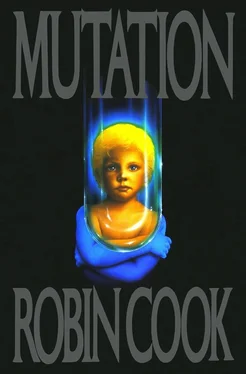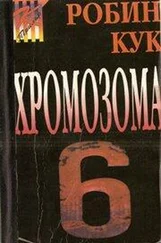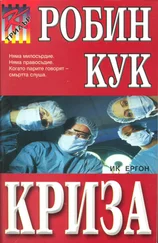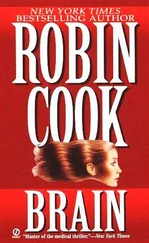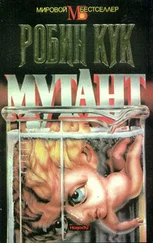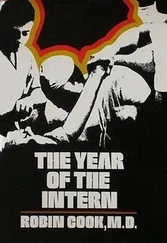Thanks to Jean, who provided lots of literal and figurative nourishment
TO GRANDPARENTS
For Mae and Ed, whom I wish I had known better
For Esther and John, who welcomed me into their family
For Louise and Bill, who adopted me out of pure generosity
“HOW DARE YOU SPORT THUS WITH LIFE.”
Mary Wollstonecraft Shelley
Frankenstein (1818)
Energy had been building within the millions of neurons since they’d first formed six months previously. The nerve cells were sizzling with electrical energy steadily galvanizing toward a voltaic threshold. The arborization of the nerve cells’ dendrites and the supporting microglia cells had been increasing at an exponential rate, with hundreds of thousands of new synaptic connections arising every hour. It was like a nuclear reactor on the brink of hypercriticality.
At last it happened! The threshold was reached and surpassed. Microbolts of electric charges spread like wildfire through the complicated plexus of synaptic connections, energizing the whole mass. Intracellular vesicles poured forth their neurotransmitters and neuromodulators, increasing the level of excitation to another critical point.
Out of this complex microscopic cellular activity emerged one of the mysteries of the universe: consciousness! Mind had once more been born of matter.
Consciousness was the faculty that provided foundation for memory and meaning; and also terror and dread. Withconsciousness came the burden of knowledge of eventual death. But at that moment, the consciousness created was consciousness without awareness. Awareness was next and soon to come.
Prologue
October 11, 1978
“Oh, God!” Mary Millman said, gripping the sheets with both hands. The agony was starting again in her lower abdomen, spreading rapidly into her groin and into her lower back like a shaft of molten steel.
“Give me something for the pain! Please! I can’t stand it!” Then she screamed.
“Mary, you’re doing fine,” Dr. Stedman said calmly. “Just take deep breaths.” He was putting on a pair of rubber gloves, snapping the fingers into place.
“I can’t take it,” Mary cried hoarsely. She twisted herself into a different position, but it didn’t provide any relief. Each second the pain intensified. She held her breath and, by reflex, contracted every muscle in her body.
“Mary!” Dr. Stedman said firmly, grabbing Mary’s arm. “Don’t push! It won’t help until your cervix is dilated. And it might hurt the baby!”
Mary opened her eyes and tried to relax her body. Her breath came out in an agonized groan. “I can’t help it,” she whimpered through tears. “Please — I can’t take it. Help me!” Her words were lost in another shriek.
Mary Millman was a twenty-two-year-old secretary who worked for a department store in downtown Detroit. When she’d seen the advertisement to be a surrogate mother, the idea of the money had seemed like a godsend — a perfect way for her to finally settle the seemingly endless debts left from her mother’s long illness. But never having been pregnant or seen a birth, except in movies, she’d had no idea what it would be like. At the moment she couldn’t think about the thirty thousand dollars she was to receive when it was all over, a figure much higher than the “going” fee for surrogacy in Michigan, the one state where an infant could be adopted before birth. She thought she was going to die.
The pain peaked, then leveled off. Mary was able to snatch a few shallow breaths. “I need a pain shot,” she said with some difficulty. Her mouth was dry.
“You’ve already had two,” Dr. Stedman answered. He was preoccupied with removing the pair of gloves he’d contaminated by grabbing her arm, replacing them with a new and sterile pair.
“I don’t feel them,” Mary moaned.
“Maybe not at the height of a contraction,” Dr. Stedman said, “but just a few moments ago you were asleep.”
“I was?” Mary looked up for confirmation into the face of Marsha Frank, one of the adoptive parents, who was gently wiping her forehead with a cool, damp washcloth. Marsha nodded. She had a warm, empathetic smile. Mary liked her and was thankful Marsha had insisted on being present at the birth. Both Franks had made that a condition of the agreement, though Mary was less enthusiastic about the prospective father, who was constantly barking orders at her.
“Remember, the baby gets whatever medications you get,” he was now saying sharply. “We can’t jeopardize his life just to ease your pain.”
Dr. Stedman gave Victor Frank a quick look. The man was getting on his nerves. As far as Dr. Stedman was concerned, Frank was the worst prospective father he’d ever allowed in the labor room. What made it particularly astounding was that Frank was a physician himself and had had obstetric training before going into research. If he had had such experience, it certainly didn’t show in his bedside manner. A long sigh from Mary brought Dr. Stedman’s attention back to his patient.
The grimace that had distorted Mary’s face slowly faded. The contraction was obviously over. “Okay,” Dr. Stedman said, motioning for the nurse to lift the sheet covering Mary’s legs. “Let’s see what’s going on.” He bent over and positioned Mary’s legs.
“Maybe we should do an ultrasound?” Victor suggested. “I don’t think we’re making much progress.”
Dr. Stedman straightened up. “Dr. Frank! If you don’t mind...” He let his sentence trail off, hoping that his tone conveyed his irritation.
Victor Frank looked up at Dr. Stedman, and Stedman suddenly realized the man was terrified. Frank’s face was porcelain white, with beads of perspiration along his hairline. Perhaps using a surrogate was a unique strain even for a doctor.
“Oh!” exclaimed Mary. There was a sudden gush of fluid onto the bed, drawing Dr. Stedman’s attention back to his patient. For the moment he forgot about Frank.
“That’s the rupture of the membranes,” Dr. Stedman said. “It’s entirely normal, as I explained before. Let’s see where we are with this baby.”
Mary closed her eyes. She felt fingers going back inside of her. Lying in sheets drenched with her own fluid, she felt humiliated and vulnerable. She’d told herself she was doing this not just for the money but to bring happiness to a couple who couldn’t have another baby. Marsha had been so sweet and persuasive. Now she wondered if she’d done the right thing. Then another contraction forced all thought from her head.
“Well, well!” Dr. Stedman exclaimed. “Very good, Mary. Very good indeed.” He snapped off the rubber gloves and tossed them aside. “The baby’s head is now engaged and your cervix is almost entirely dilated. Good girl!” He turned to the nurse. “Let’s move the show into the delivery room.”
“Can I have some pain medicine now?” Mary asked.
“Just as soon as we get in the delivery room,” Dr. Stedman said cheerfully. He was relieved. Then he felt a hand on his arm.
“Are you sure the head isn’t too big?” asked Victor abruptly, pulling Dr. Stedman aside.
Dr. Stedman could feel a tremor in the hand that gripped his arm. He reached up and peeled away the fingers. “I said the head was engaged. That means the head has passed through the pelvic inlet. I’m certain you remember that!”
“Are you sure the head is engaged?” asked Victor.
A wave of resentment wafted through Dr. Stedman. He was about to lose his temper, but he saw that Frank was trembling with anxiety. Holding his anger in check, Stedman just said, “The head is engaged. I’m certain.” Then he added: “If this is upsetting you, perhaps it would be best if you went to the waiting room.”
Читать дальше
